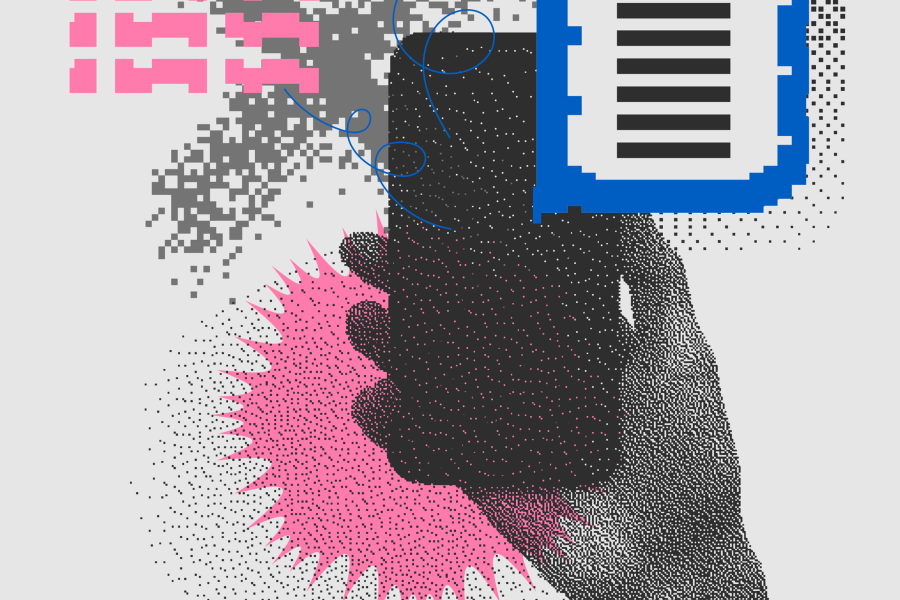Before the November midterm elections, Russia activated an army of misinformation-laden social media bots aimed at convincing voters in closely contested House of Representatives and Senate races that the U.S. should not support efforts by Ukraine to resist the Russian invasion.
But the spread of so-called "fake news" via the internet is not confined to election time. An estimated 5 billion people around the globe get entertainment and information and connect with others online, and most of them use social media. By some estimates, 40% of internet users say that they have inadvertently shared misinformation online.
That statistic does not surprise Joe Carrigan, senior security engineer at the Johns Hopkins University Information Security Institute. The co-host of a popular Cyberwire podcast called Hacking Humans, Carrigan is an expert on social engineering scams and the bots that perpetrate them.
"Social media bots are automated programs that engage with users on social media by mimicking human users," he says. "Some are fully autonomous, but others are partially controlled by people."
He offers some expert advice about how internet users can protect themselves–and others–from misinformation online:
Assume any news you see on social media was created by bots.
There is no hard data on how many bots populate the various social media platforms, Carrigan says, and estimates vary greatly. "I have seen estimates for Twitter that run anywhere from 8% to 80% (from one FBI agent's opinion). I have seen more believable numbers that put it around 10% to 12%, and I would not be surprised to find that to be true," Carrigan says. "Meta estimates that 5% of Facebook's monthly active accounts are fake. I would not be surprised if this estimate was low."
The main takeaway, Carrigan says, is that social media platforms are not reliable sources of information.
"People should not get their news from social media—period," he says. "They should totally discount any news delivered by that method. It's a tough stance, but it's the only way to be sure. View any news content on social media with skepticism, and hesitate before you share it."
Acknowledge that all media sources have bias—as we all do.
"A lot of outlets are owned and operated by either political parties, their allies, or foreign governments, and carry biases as a result," Carrigan says. "It helps when using the internet to make yourself aware of what those biases are."
Tools like AllSides, which Carrigan says is a useful tool for categorizing and understanding the biases of news organizations, can help Internet users evaluate their sources of information.
He also suggests Internet users seek out varying viewpoints, even those that oppose their own views. "We all love reading news that we agree with, and that is a big part of the problem!" he says. "It takes courage to ask yourself if someone who disagrees with you might be right about something."
Establish a list of trusted media sources.
Carrigan recommends starting with a centrist source from AllSides. He also advises Internet users to be clear about the difference between the news reporting and opinion pieces. "All too often, media outlets allow opinion to masquerade as news reporting. Good news organizations will clearly distinguish their news pieces from their opinion pieces," he says.
Sometimes, finding a trusted media source means steering clear from the mainstream cable networks. "Avoid news outlets on the extreme end of the spectrum. This now includes Fox News, CNN, and MSNBC (according to AllSides Media)," he says.
Finally, he recommends verifying news with other, unaffiliated sources.
Use fact-checking tools and websites to verify content.
Use fact-checking resources such as Snopes, PolitiFact, factcheck.org and Leadstories.com (which addresses some really outlandish claims) to vet content. But remember: Even these fact-checking sites are going to have their own biases, Carrigan says. "I would never trust a big tech firm such as Google as an arbiter of truth. There are too many perverse incentives for any big tech firm here. It is best to look for a non-profit organization that does its best to be fair and non-partisan," he says.
Remember that seeing is not believing, so check videos and images, too.
So-called "deep fake" technology, which uses artificial intelligence to alter existing images, means it is "more challenging than ever before to identify whether what you are seeing is real," Carrigan says. "Videos can be altered in a variety of ways, from being taken out of context to deceptive editing."
There are online resources Carrigan recommends for better understanding the threat of deep fakes, in particular The Washington Post's fact-checker and the Poynter Institute. He also says there are tools that can help detect fakes: Google's image search function will provide a history of an image and where else it has appeared, and a tool called InVid can also help establish the veracity of videos.
Bottom line: View everything online with skepticism and a critical eye
The adage "Don't believe anything you hear and only half of what you see," applies to the current state of news on social media, Carrigan says. "I would update it to be 'Don't believe anything you read on social media, and only half of the videos are genuine, and even those are probably taken out of context to serve some political agenda,'" he adds.
Posted in Science+Technology, Voices+Opinion









